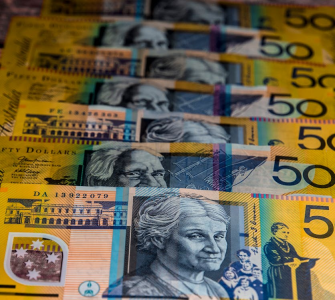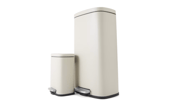Did you know you can claim damaged cash? Aussie worker’s $20 note reveals shocking loophole
By
Maan
- Replies 0
A simple $20 banknote might seem like an everyday transaction, but for one Australian worker, it sparked a surprising revelation.
What happened next led to a deep dive into what happens when cash goes wrong.
It uncovered millions of dollars in claims that many Aussies are missing out on.
An Australian retail worker sparked a debate after sharing a photo of a damaged $20 banknote they received as payment.
The note had a portion missing from its top left-hand corner, and the worker was unsure whether it could still be used.
They asked: ‘This was accepted at work, is it still okay to use?’
‘Will the bank still accept it like this or should it be thrown out?’
Aussies quickly weighed in, with one person explaining that the Reserve Bank of Australia (RBA) would pay out the full face value of a banknote if less than 20 per cent of it was missing.
The RBA's goal is to ensure only ‘good quality’ banknotes circulate, so it asks banks to remove any damaged notes from circulation.
If a banknote is between 20 per cent and 80 per cent damaged, the RBA pays the value proportionally based on the percentage remaining.
For example, someone with half a $10 note would receive $5.
If more than 80 per cent of the banknote is missing, no value is paid.
The serial number does not affect the claim, as long as a significant portion of the note remains intact.
Last year, the RBA processed around 8,500 claims, resulting in $3.5 million paid to Aussies for damaged notes.
This was down from previous years, which had higher claim volumes due to natural disasters like floods.
For those with a damaged note, the RBA recommends taking it to a bank or financial institution for exchange.
These institutions are encouraged to accept claims.
When taking a damaged banknote to the bank, the value is assessed using grids provided by the RBA.
If you bring in half of a $20 note, for example, you'd only receive $10 back.
Shops are not legally required to accept damaged banknotes as payment or change
Therefore, it's best to take the note to the bank rather than attempting to use it elsewhere.
Many Australians were surprised by the rule.
One person said: ‘That’s crazy, I never knew that.’
Another shared, ‘I have worked in hospitality and retail for a decade and had no idea this was a thing.’
Others recalled successful experiences exchanging damaged notes.
One said, ‘I was whippersnipping an area of long grass. Looked down and went shit. Had just whippersnipper a $100 bill! It was pretty tatty so took it to a bank. They exchanged it for a brand new one.’
Another shared: ‘I did this once with a half-shredded $5. It took it to Bendigo Bank and it took like two weeks to turn the note around and give me like $3 for it.’

Have you ever had a damaged note exchanged? Let us know your thoughts in the comments!
What happened next led to a deep dive into what happens when cash goes wrong.
It uncovered millions of dollars in claims that many Aussies are missing out on.
An Australian retail worker sparked a debate after sharing a photo of a damaged $20 banknote they received as payment.
The note had a portion missing from its top left-hand corner, and the worker was unsure whether it could still be used.
They asked: ‘This was accepted at work, is it still okay to use?’
‘Will the bank still accept it like this or should it be thrown out?’
Aussies quickly weighed in, with one person explaining that the Reserve Bank of Australia (RBA) would pay out the full face value of a banknote if less than 20 per cent of it was missing.
The RBA's goal is to ensure only ‘good quality’ banknotes circulate, so it asks banks to remove any damaged notes from circulation.
If a banknote is between 20 per cent and 80 per cent damaged, the RBA pays the value proportionally based on the percentage remaining.
For example, someone with half a $10 note would receive $5.
If more than 80 per cent of the banknote is missing, no value is paid.
The serial number does not affect the claim, as long as a significant portion of the note remains intact.
Last year, the RBA processed around 8,500 claims, resulting in $3.5 million paid to Aussies for damaged notes.
This was down from previous years, which had higher claim volumes due to natural disasters like floods.
For those with a damaged note, the RBA recommends taking it to a bank or financial institution for exchange.
These institutions are encouraged to accept claims.
When taking a damaged banknote to the bank, the value is assessed using grids provided by the RBA.
If you bring in half of a $20 note, for example, you'd only receive $10 back.
Shops are not legally required to accept damaged banknotes as payment or change
Therefore, it's best to take the note to the bank rather than attempting to use it elsewhere.
Many Australians were surprised by the rule.
One person said: ‘That’s crazy, I never knew that.’
Another shared, ‘I have worked in hospitality and retail for a decade and had no idea this was a thing.’
Others recalled successful experiences exchanging damaged notes.
One said, ‘I was whippersnipping an area of long grass. Looked down and went shit. Had just whippersnipper a $100 bill! It was pretty tatty so took it to a bank. They exchanged it for a brand new one.’
Another shared: ‘I did this once with a half-shredded $5. It took it to Bendigo Bank and it took like two weeks to turn the note around and give me like $3 for it.’
Key Takeaways
- A worker shared a photo of a damaged $20 banknote, sparking a debate on whether it could still be used.
- The Reserve Bank of Australia (RBA) pays out the full value for notes with less than 20 per cent missing, with a proportional payout for notes damaged between 20 per cent and 80 per cent.
- Damaged banknotes can be exchanged at banks or financial institutions, but shops are not required to accept them.
- Many Australians were surprised by the rule, with some sharing their own experiences of successfully exchanging damaged notes.
Have you ever had a damaged note exchanged? Let us know your thoughts in the comments!








